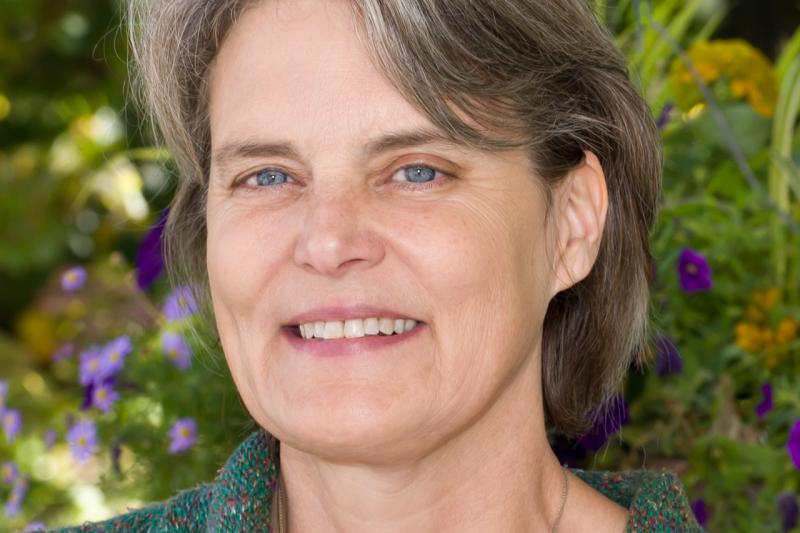Dr. Anne Hollowed is a Senior Scientist with the NOAA Fisheries Alaska Fisheries Science Center. She conducts research on the effects of climate and ecosystem change on the current and future status of fish and fisheries. She leads the Status of Stocks and Multispecies Assessment program. Anne currently serves as co-chair of the North Pacific Fishery Management Council's Scientific and Statistical Committee. She is also an Affiliate Professor with the School of Aquatic and Fishery Sciences at the University of Washington.
We asked Anne to share a little bit about herself, what inspired her to pursue a career in fisheries science and what she would recommend for other young scientists interested in getting into the field.
When did you know you wanted to be a fisheries scientist?
My mother was a chemist and she nurtured my interest in science. I spent my summers in Kansas, at a family retreat. Time spent disconnected from the fast pace of the world allowed me to explore the diversity of nature and animal behavior. By the time I entered college I knew I wanted to pursue a degree in biology. My decision to pursue a career in ocean studies was formed during my semester abroad. I attended Lawrence University, a small liberal arts college in Wisconsin. My professors taught an interdisciplinary course in oceanography that included field work on Andros Island in the Bahamas. It only took one open ocean dive for me to know that I wanted to spend the rest of my career studying the ocean.
“It only took one open ocean dive for me to know that I wanted to spend the rest of my career studying the ocean.”
What do you like most about your current position?
My current position places me at the interface of science and management. In this capacity, I’m reminded on a daily basis of the integral role science has in informing sustainable fisheries management decisions. I lead an extremely talented group of scientists who inspire me every day. My office is co-located with NOAA Pacific Marine Environmental Laboratory and is in close proximity to the University of Washington’s School of Aquatic and Fishery Sciences. Many of us serve as affiliate faculty and we work with graduate students and post-doctoral appointees on fascinating research projects. The Alaska Fisheries Science Center encourages interdisciplinary research partnerships that use the diverse talents of government and university scientists. I have been lucky to be involved in many of these partnerships.
Although, the research that we pursue at the Alaska Fisheries Science Center is relevant to our regional constituents, it is also of interest to our fellow scientists around the world. My involvement in international research organizations such as the International Council for Exploration of the Sea, the North Pacific Marine Science Organization and other international collaborative research bodies provided the foundation for international research partnerships throughout my career. These experiences have fostered friendships and working relationships with colleagues on a global scale.
What are your greatest challenges?
Throughout my career, the Alaska Fisheries Science Center has emphasized the importance of building sustainable fisheries and advancing an ecosystem approach to fisheries management. High latitude ecosystems are particularly vulnerable to changing climate and ocean conditions. Identifying and testing the performance of management strategies under changing climate conditions is a challenging endeavor. In response to this challenge, NOAA supported the formation of an interdisciplinary research team. It promotes climate-resilient fisheries and coastal communities in the Bering Sea through actionable integrated scientific advice to support climate-informed ecosystem-based fisheries management (the Alaska Climate Integrated Modeling Project). My involvement in this project reminds me every day of the critical role that scientists play in informing the public of the implications of choices we make on ocean ecosystems.
What steps would you recommend someone take if they wanted to get a position as a fisheries scientist?
All of my answers above illustrate the importance of interdisciplinary training. As NOAA Fisheries pursues the Ecosystem-Based Fisheries Management Policy, interdisciplinary training will continue to be a valued element in the portfolio of successful applicants. It is inevitable that the next generation of fisheries scientists will need to be prepared to transition to high speed computing and complex modeling which will require skills in working with large databases. However, while these skills are necessary for success, I encourage young fisheries scientists to spend time in the field. For most biologists, our early inspiration to pursue science came from spending time observing the natural world. There is no substitute for this experience. I still return annually to our family retreat in Kansas to slow down and observe the natural world. It helps to remind me of the joy of scientific pursuits and to learn from the surprises of the living world.

